Back pain is treatable thanks to innovative new treatments
HIGHLIGHTS:
-
When treating back pain, the doctor will usually turn to pain relief medication, rest or reduced use of the back, physiotherapy, or pain relief injections. However, should symptoms remain and involve other crucial indicators, the doctor may consider surgical treatment.
-
Spinal surgery has come a long way in recent years, in terms of the techniques used, the pain relief methods utilized during procedures, and post-surgery physical rehabilitation. These improvements have significantly increased the chances of success.
-
Minimally invasive surgery (MIS) is a surgical technique that reduces blood loss, less soft tissue injury, and enables rapid rehabilitation for patients, thus accelerating the return to their former life.
Back Pain Treatment
Treatment for back pain is selected based on the symptoms and diagnosis. For general back pain, patients can usually self-medicate using the following techniques: resting or reducing use of the back, managing pain with medication, and rehabilitating the injured region using cool or hot compresses alongside back-specific stretch routines.
Nevertheless, if a patient has taken the aforementioned action with no success, or where back pain involves certain red flag signs, urgent medical attention should be sought to ensure appropriate treatment can take place. These treatments can be classified into the following two main groups:
1.Non-surgical treatment involves managing symptoms for pain management:
- Medicated treatment using drugs such as pain relief medications, anti-inflammatories (NSAIDS), muscle relaxants, and peripheral neuropathy medication. However, the use of such drugs in the elderly and those with underlying health conditions who are already taking regular medications must be carefully planned due to the potential side effects associated with pain relief medications.
- Physiotherapy can include ultrasound therapy, laser therapy, shockwave therapy, or muscle strengthening exercises, which can all help prevent a recurrence of the condition. Learn more about our rehabilitation medicine center which provides a comprehensive range of treatments, delivered by a team of fully trained rehabilitation medicine specialists working alongside a team of highly experienced physiotherapists.
- A back support or brace may be used to provide spinal support for people experiencing back pain. This equipment is beneficial in the short-term as it can increase comfort and reduce pain, although it may also be used to support the backs of those who have recently undergone spinal surgery.
- Spinal procedures include acupuncture, trigger point injections, facet injections, and epidural steroid injections. These procedures not only significantly reduce pain, but are also a means of confirming a diagnosis, which make them a highly effective, non-surgical form of treatment that can also reduce patient risk. Learn more about our Sports and Orthopedic Center and the specialists who offer these procedures.
- Specialist attention, such as from a chiropractor, may help redress spinal imbalances to increase flexibility and range of movement and reduce pain. However, acupuncture and deep tissue massage can achieve similar results.
2.Surgical treatment may be considered for back pain in patients who have been unable to manage their pain successfully with non-surgical methods after at least 6–12 weeks, or for patients with conditions involving nerve damage such as muscle atrophy and uncontrollable bowel movements due to reduced sphincter function.
Surgical options
When considering surgical treatment for back pain, medical staff will assess the symptoms and their severity in each case. There are two main forms of spinal surgery:
1) Nerve decompression surgery involves decompressing injured nerves. It is a type of surgery aimed at removing the cause of spinal stenosis, such as disc herniation. Nerve decompression surgery does not require lumbar fusion with instrumentation and, once surgery is complete, patients usually reacquire a full range of movement.
2) Nerve decompression and fusion surgery, also designed to decompress injured nerves, involves inserting an instrument to provide additional spinal support. This form of surgery is suitable for patients with spinal stenosis alongside instability in the injured region, such as in those with spinal deformities, spinal dislocation injuries, scoliosis, or curvature of the spine.
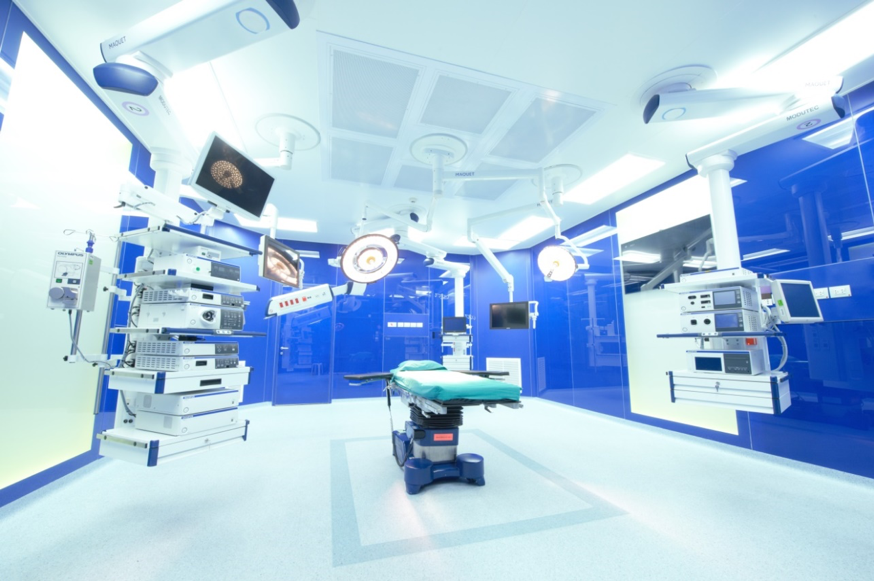
Equipment or technologies currently used to improve efficacy of spinal surgery
““Spine or neck surgeries are so risky!””
““Spinal surgery will either not work or prevent you from being able to walk.””
Many of you will have heard such worries expressed by friends or family, but the truth is that the modern surgical techniques used to treat spine or neck injuries are not as risky as you may think. This is due to innovations and progress that has been made in the field of spinal surgery, from the surgical procedures themselves to surgery pain management techniques and post-surgery rehabilitation involving carefully planned physiotherapy. These developments minimize risks and significantly improve the chances of success. Surgeries available today can be classified into two main types: conventional spine surgery and modern spine surgery (minimally invasive spine surgery).
1. Conventional Spine Surgery
- Nerve Decompression and Fusion
- Decompressive lumbar laminectomy with posterolateral spinal fusion (DLPL fusion) procedures.
2. Minimally Invasive Spine Surgery
This is a modern technique that offers all the benefits of minimally invasive surgery, including minimized damage or disruption to the muscles in the injured region, significantly reduced blood loss, minimal pain, and accelerated rehabilitation times that enable patients to make a speedier recovery than was previously possible. Examples of minimally invasive spine surgery are:
2.1 Nerve decompression surgeries
- Full-endoscopic lumbar discectomy (FED) procedures.
- Microscopic lumbar microdiscectomy procedures.
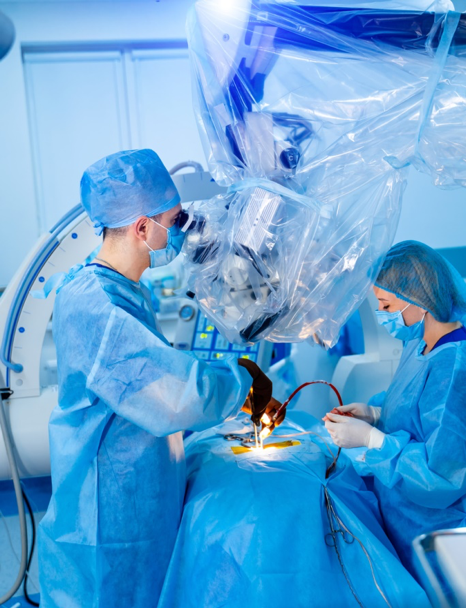
2.2 Nerve decompression and fusion surgeries
- Minimally invasive transforaminal lumbar interbody fusion (MIS TLIF) procedures can be used to relieve spinal stenosis. The procedure involves stabilizing the affected joint by inserting a metal screw that has been specially designed to fit through a tiny incision. This not only reduces the muscle damage caused by conventional surgery, but also accelerates rehabilitation by reducing the time spent recovering in the hospital.
- Anterior Lumbar Interbody Fusion (ALIF)
- Lateral Lumbar Interbody Fusion (LLIF)
3. Navigation and robot-assisted spine surgery
This is a new surgical technique that involves the use of a computer navigation system to assist the surgeons. Its benefits include increased accuracy when inserting metal screws or any other materials into the spine or neck, and a reduction in the likelihood of injuries to the central nervous system resulting from surgery.
Post-surgery recovery advice
Post-surgery recovery times differ from case to case depending on patient factors, such as underlying medical conditions, severity of symptoms, ability to carry out certain tasks, or pre-surgery capabilities, and doctor factors, such as surgical technique and expertise.
Post-surgery recovery from spine surgery usually involves:
Physiotherapy
Physiotherapy is used to restore physical capabilities to the patient so that they can make a safe return to their daily life. Physiotherapy can involve movement training, posture modifications, muscle stretches, strengthening the muscles in the back and legs, as well as training patients in undertaking tasks required for daily life in a way that will reduce the risk of injury or falls following surgery.
|
Assisted calf stretches Hold the ankle and use your arm to gently push the foot into the ankle until the patient feels a painless tightening in their calf. Hold the position for 10 seconds and repeat the stretch 10 times. |
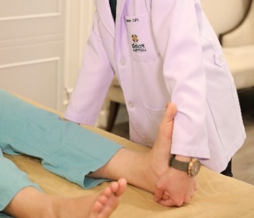 |
|
Core muscle stretches The patient lies on their back, bending both of their knees and tensing their stomach as if trying to bring their belly button into the abdomen and pressing their back into the mattress. The physiotherapist presses hands into their back and stomach, holding for 5-10 seconds per time and repeating a total of 10-20 times. |
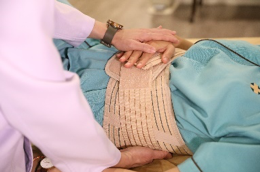 |
|
Knee muscle exercises The patient lies on their back pressing the back of their knees into the mattress – this may require the physiotherapist’s assistance or a pillow underneath the knees – holding the position for 5-10 seconds and repeating 10-20 times. |
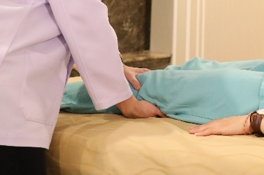 |
|
Method used to turn patients following surgery The patient should have their knees bent and together as they are gently rolled over without their core twisting. The physiotherapist should do this as if they were rolling a log, keeping their hands on the patient’s hips and shoulders to support their weight. |
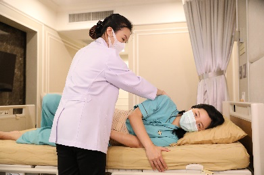 |
|
Training to stand from a sitting position The patient should hold onto a walker with both hands before pushing down on it to straighten their back. Keep the feet shoulder width apart so that the weight is placed onto both feet, and activate the knees and hips to help stand up straight. |
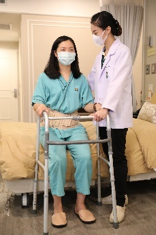 |
|
Training to walk The patient should hold the walker with both hands, pressing down onto it as each foot is carefully placed in front of the other. The walker should take most of the weight, with the patient gradually reducing their reliance on the device as they become stronger. |
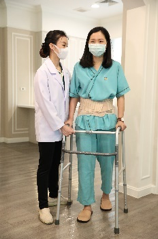 |
Providing advice on what to do and what not to do following surgery When deciding on which technique to employ for a spine procedure, doctors must consider the severity of the symptoms and the condition, as well as factors such as age, underlying medical conditions, pre-existing physical capabilities, the length of time it will take to recover fully following surgery, and the mental state of the patient. Moreover, to increase the likelihood of a successful surgery, patients should consult with a spinal specialist who will advise them on the most suitable form of treatment for their needs.
Reduce COVID-19 risk when performing surgical procedures and physiotherapy
Our hospital is acutely aware of the importance of maintaining the highest levels of cleanliness and infection prevention during the COVID-19 virus pandemic, with these measures extending to surgical procedures and physiotherapy sessions. Our commitment means that our patients can rest assured that they will always be in a safe, clean, and germ-free environment whenever they undergo surgery and attend physiotherapy appointments.
Preventive measures employed during surgery
Personal protective equipment (PPE)
1. There is a limit on the number of medical personnel allowed into the operating theatre during procedures, ensuring that only essential staff are in attendance.
2. All medical staff present in the operating theatre, including surgeons, scrub nurses, anesthesiologists, and nurses, must wear a surgical gown, N95 face mask, latex gloves, a disposable hair cover or hood, face shield or goggles, and shoe covers (or special boots if shoe covers are unavailable).
3. Patients must wear a mask when conscious and breathing independently.
Preparing the operating theater
1. Only essential items are brought into the operating theatre, such as operating equipment, essential tools, medical supplies (sutures, gauze, cloth), and syringe pumps. All medical supplies are disposable.
2. The bed has a paper wrap applied using a special piece of machinery, with monitors and other devices wrapped in plastic film that is then disposed of into red trash cans (labelled as infectious material) once the procedure is over.
3. The door is only opened when necessary and sliding doors are operated appropriately. Air changes at least 15 times/hour.
Cleaning procedures
1. Operating theatre air conditioning is left on for 1 – 2 hours following each procedure. Additionally, 30 minutes after the operation has been completed, a cleaner wearing full PPE enters the room to clean the bed, machinery, and all equipment using CaviWipes.
2. Medical staff take a shower following each procedure.
3. PPE is disposed of into the operating theater’s red trash cans, hands are cleaned using alcohol gel, and N95 face masks and face shields are thoroughly disinfected so that they may be used again.
Post-surgery patient care
1. Initial post-surgery patient care takes place in the operating theatre instead of in patient recovery rooms.
2. Nursing staff in the operating theatre remove their PPE when transferring patients, except for their disposable hair cover or hood, N95 face mask, face shield, waterproof gown, latex gloves, and shoe covers or special boots.
Preventive measures employed during physiotherapy sessions
1. Medical staff, physiotherapists, assistants, and anybody else in attendance wear surgical masks at all times when dealing with patients, whether on the ward or in the rehabilitation center.
2. All equipment used in physiotherapy sessions is thoroughly cleaned with CaviWipes before and after use, including ultrasound devices, electrical stimulation machinery, walkers, etc.
3. Mattresses are cleaned, and all bedding is changed after each use.
4. Patient lockers are wiped down with CaviWipes after each use.
A spine specialist with over 10 years of experience, Phat Amnajtrakul, M.D. has carried out an average of 100–120 spinal surgeries per year. Having earned his spine surgery qualifications in Germany, he specializes in performing minimal invasive spine surgeries and providing extensive expertise on orthopedic trauma surgery. In his position as resident in orthopedic surgery, Dr. Phat serves as an advisor to junior doctors in their studies, and carries out his own research into acute spinal injuries. His papers are regularly published in medical journals and are available to the public.
The Sports and Orthopedic Center also reaches out to anyone suffering from orthopedic injuries, or from acute or chronic damage to bones and joints. Our center brings together a highly accomplished team of 38 orthopedic surgeons, physical therapists and sports injury and physical rehabilitation experts. We pair these experienced experts with the latest orthopedic and physical rehabilitation equipment, ensuring all patients receive the best possible care.
Samitivej has a team ready to help and provide services for:
- Treatment Plan Consultation with a doctor via online video-call (second opinion)
- Treatment Planning if you have medical records or a price estimate from another hospital
- Cost Planning by our Appraisals Team with price guarantee (only for procedure packages without complications)
- Check Initial Coverage Eligibility with Thai and international insurance companies (only for insurance companies in contract with the Hospital)
Related
articles